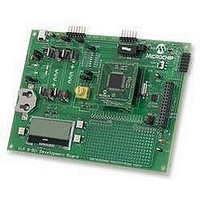DM240313 Microchip Technology, DM240313 Datasheet - Page 23

DM240313
Manufacturer Part Number
DM240313
Description
BOARD DEMO 8BIT XLP
Manufacturer
Microchip Technology
Series
XLP™r
Type
MCUr
Datasheet
1.DM240313.pdf
(38 pages)
Specifications of DM240313
Contents
Board
Data Bus Width
8 bit
Silicon Manufacturer
Microchip
Core Architecture
PIC
Core Sub-architecture
PIC16, PIC18
Silicon Core Number
PIC16F, PIC18F
Kit Contents
Board
Features
32 Character Backlit LCD Display, Temperature Sensor
Rohs Compliant
Yes
Silicon Family Name
PIC18FxxKxx
Lead Free Status / RoHS Status
Lead free / RoHS Compliant
For Use With/related Products
*
Lead Free Status / RoHS Status
Lead free / RoHS Compliant, Lead free / RoHS Compliant
Available stocks
Company
Part Number
Manufacturer
Quantity
Price
Company:
Part Number:
DM240313
Manufacturer:
MICROCHIP
Quantity:
12 000
2011 Microchip Technology Inc.
3.1
3.2
Chapter 3. XLP 8-Bit Development Board Hardware
INTRODUCTION
HARDWARE FEATURES
This chapter provides a more detailed description of the hardware features of the XLP
8-Bit Development Board.
The key features of the XLP 8-bit board are listed below. They are represented in the
order given in
3.2.1
The XLP 8-bit board has been designed to accommodate PIC16 and PIC18 microcon-
trollers through a Plug-In Module (PIM) containing the microcontroller. A wide variety
of 64 and 80-pin microcontroller devices are available on Plug-In Modules through
Microchip. It is recommended to check all PIM breakout schematics to the XLP sche-
matics to compare for functionality and feature set.
3.2.1.1
The high degree of pin compatibility between PIC16 and PIC18 MCU devices allows
both device families to be used with the XLP 8-bit board. However, there are minor dif-
ferences in pin functionality when migrating from a 64-pin device to a 80-pin device
requiring reconfiguration of the board and some features of the board are not available
for 64-pin devices.
3.2.2
The installed microcontroller has two separate oscillator circuits connected. An external
oscillator of 10 MHz crystal (Y1) is supplied on board but is not used in the demonstra-
tion program. The MCU uses the internal system oscillator in the demonstration pro-
gram. A second oscillator, using a 32.768 kHz crystal (Y2), functions as the Timer1
oscillator and serves as the source for the RTCC and secondary oscillator.
3.2.3
There are (4) methods by which the 8-bit XLP board can be powered.
• USB Cable – Bus power via the USB connector (J11). This provides a nominal 5V
• External Power – An external, regulated DC power supply connected to the V
power source, regulated to approximately 3.3V for the microcontroller and board
components, through a Schottky diode and Low Dropout (LDO) regulator circuit
(U2). The green power LED (D5) is illuminated when this power source is used
and bus power is present.
SRC and one of the GND test points. Voltage is supplied to the board and micro-
controller without voltage drops or voltage regulation; therefore, supply voltage
must meet the voltage requirements for the installed PIC16 or PIC18 device. The
power LED does not illuminate in this configuration.
Note: There is no USB data connectivity.
64 and 80 PIC MCU Support
FEATURES AVAILABILITY BY PIC16 AND PIC18 DEVICE FAMILY
PIC16 and PIC18 Oscillator Options
Power Options
Section 1.4 “Development Board Features”
XLP 8-BIT DEVELOPMENT BOARD
USER’S GUIDE
and
Figure
DS41581A-page 23
1-1.
DD












